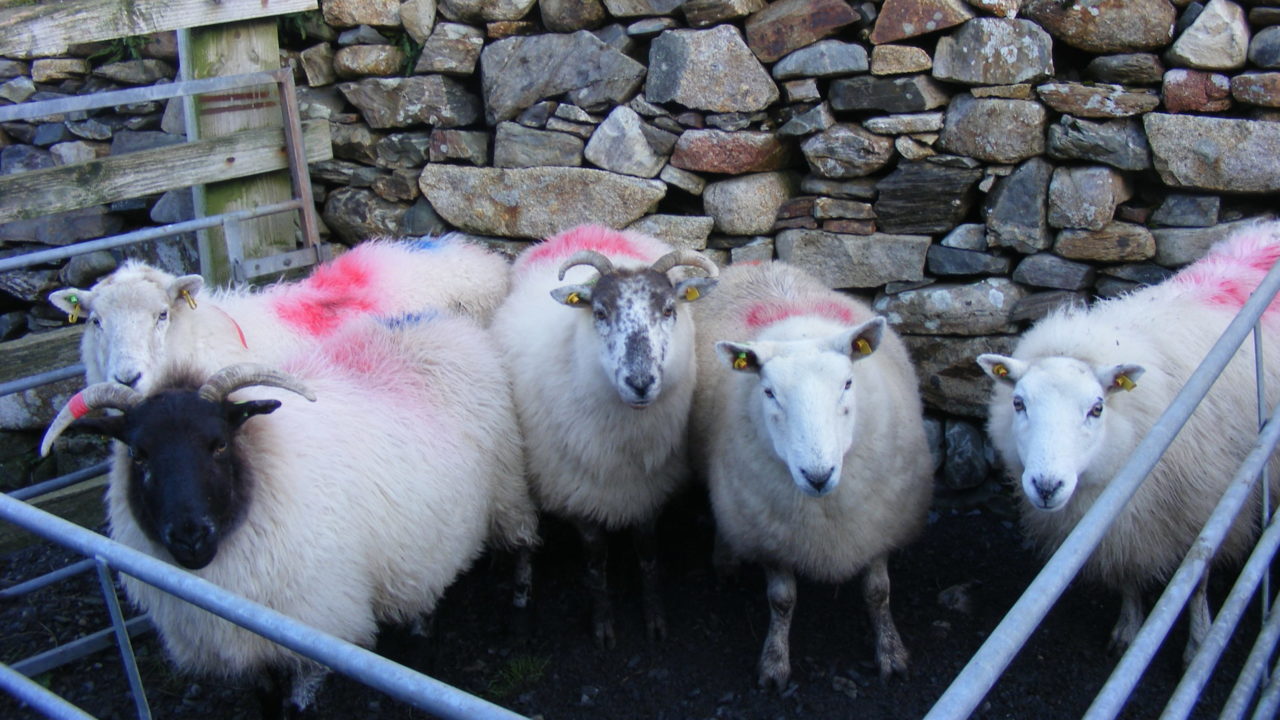Minister of State for Heritage Malcolm Noonan recently visited Connemara National Park to launch the Cladoir Sheep Conservation Project, which seeks to regenerate this rare heritage breed.
The Cladoir sheep were a species native to Connemara, but post-Famine they were “pushed out to the margins, literally to the water’s edge on the west coast, as other breeds found favour with farmers and landowners”, the Department of Housing, Local Government and Heritage said.
Survival of the Cladoir breed ‘seemed bleak’
“In fact, their name, Cladoir, translates as ‘shore-dweller’. The survival of the Cladoir breed seemed bleak during the 1990s and the breed was deemed effectively extinct in 1995.
“However, Sean Cadden, a retired agricultural adviser and Tom King, a farmer from Westport were enchanted by the Cladoir story and made enquiries in south Connemara about the sheep.
“They managed to assemble a small flock of Cladoir-like sheep, which were then purchased by Connemara National Park in Letterfrack in October 2019.
“A number of other Cladoir-like sheep were also purchased by the national park in 2020.
“In the autumn of 2020, 65 sheep from this flock were sampled for a DNA test. 56 of those, including males and females, had significant DNA of a distinct breed – this is the Cladoir DNA.”
Cladoir sheep history
The Cladoir Sheep Preservation Committee is jointly chaired by Sean Cadden and Tom King, with members including Shannon Rice-Nichols, Suzanna Crampton and John Brennan of the Irish Native Rare Breeds Society.
Irish Natura and Hill Farmers Association (INHFA) board members Brendan Joyce and Brendan O’Malley are two of the farmers who will be working with the captive breeding project.
Before the Famine, sheep in the west of Ireland were often kept in small flocks to produce enough wool to supply the family with clothes, according to information provided by the Department of Housing, Local Government and Heritage.

“These sheep had fine wool which could be knitted or woven. South Connemara was no exception. The farms were tiny and little grass was available for grazing by sheep, but it had a long seashore with abundant seaweed.
“Most of the sheep in that area were confined to the shore and were called Cladoiri, which in English means ‘shore-dwellers’.
“It appears that after the Famine, native sheep were pushed from north Connemara but survived in the south in very small flocks, often confined to the seashore, from which the name Cladoir came.
“It appears the Cladoir breed survived because it was not a commercial sheep. There was no money being made from them, so no effort was made to improve the stock by introducing a new breed of rams.”
The NPWS said it is “now anxious that the breed be regenerated”.
